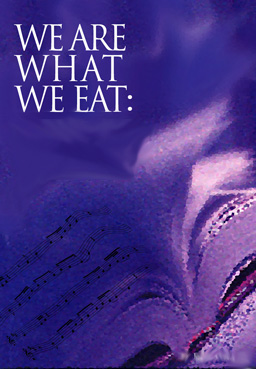| |
Of What
Do We Sing?
The Role
of Music in
Liturgy
_______________________________
Sacrosanctum Consilium,
“The Constitution on the Sacred Liturgy,”
In Sacrosanctum Consilium, “The Constitution on the Sacred Liturgy,” the church reminded us that the purpose of liturgy is to infuse the vitality of God into the lives of the faithful, and nurtured by that sustenance, for the faithful to in turn feed the hungry of the world with the food of God’s love, “the Mystery of Christ and the real nature of the Church.”
As the universal call to Christlike ministry and shared priesthood in the world fuels much of Lumen Gentium’s prophetic heat, so the power of Baptism’s uniting of all the faithful in the offering of prayer and praise is a major thrust of Sarcosanctum’s energy. The faithful are no longer observers, assistants in the Liturgy--as fellow Baptized, we are co-presiders in the sacrifice.
As such, we are called, all of the faithful, to full, active and conscious participation as co-ministers. We move in the dynamic sacramental experience of Redemption from mere receivers, to initiators, with the Sprit, of the Sacrament. It is our YES, our AMEN which completes the sacrifice, and continues it into communion with the world at large.
The Vision of Music for a parish would see full, active and conscious participation as the goal, not to the exclusion of aural inspiration, but as the pre-eminent priority. As the document so aptly illumines: “the principal choir of the liturgy is the body of faithful assembled in the pews.”
This vision would put an emphasis on researching, planning and developing a parish repertoire that is Lectionary-based, liturgically-grounded, musically sound, lyrically compelling, community-engaging and assembly-accessible, drawing from the best of newly composed and traditional congregation-focused literature.
It would mean offering a ministerial environment focusing on the spiritual and pastoral needs of the assembly first, and, only secondarily to the public at large. This would be accomplished through education in and fostering of Post-Conciliar principles of music as prayer, as the dynamic interchange and communication between the people of God and our loving Creator, and as ministry by, with and for the assembly;
Such a vision would necessitate continued development of music proficiency for all music staff and volunteers (basic musicianship, vocal technique, reading, interpretation, choral blend, etc.) toward the end of all the more effectively facilitating the “full, conscious and active participation of the assembly.”
Since continued development of pastoral, musical and management skills, as well as the fuller understanding of liturgical principles and the foundation of personal faith life of staff and volunteers, is so important, budget planning would reflect the priority of on-going education and faith formation/ ministerial growth opportunities such as retreats, in-service workshops, conferences for staff and volunteers.
Music staff would be chosen, in addition to their musical qualifications, for their ability to recruit and retain and nurture staff and volunteers and to recognize and amplify the unique gifts of all who minister.
Acknowledging the soundness of offering richly diverse musical styles at different liturgies, the music program would foster a supportive, egalitarian, organically-intersecting relationship between the ministry of all the liturgies, the Saturday vigil, early morning Sunday, Sunday evening included. Such a ministry would naturally embrace all the communities in the seasons and liturgical experiences when all the parish comes to worship together.
The choirs and cantors see their role not primarily as providers of the prayer of the people, but as facilitators of the prayer of the people, setting the tone for spiritually energizing, joyful, assembly embracing and engaging, fully participatory experience of communal worship.
Music in Catholic Worship:
The Bishops Re-visit Vatican II
..............................................................Continued>
|
 |
|